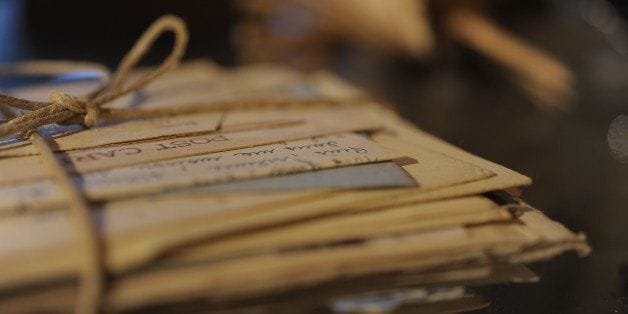- IF: Imagination and Fantasy
- Posts
- Unveiling the Epistolary Style in Sci-Fi Literature
Unveiling the Epistolary Style in Sci-Fi Literature
When Letters Tell the Future

Welcome back to another edition of our Deep Dive, where we aim to cut through the noise and illuminate those hidden gems—a journey of discovery designed to bring you those aha moments we all crave. Today, we're venturing into a fascinating narrative approach found in science fiction: the epistolary style.
What is the Epistolary Style?
The epistolary format presents a story through documents such as letters, diary entries, mission logs, and emails. Think of it as the literary equivalent of found footage films, offering a veneer of realism and an intimate glimpse into a character’s innermost thoughts and experiences.

Exploring the Narrative Power
The beauty of epistolary storytelling lies in its versatility. It weaves incredibly personal narratives while simultaneously exploring expansive sci-fi concepts. From survival to societal collapse, it provides a unique lens that shifts how readers connect with the story.
Diving into Examples
Let's dive into some standout examples within the world of sci-fi:
"Parable of the Sower" by Octavia E. Butler

Octavia Butler plunges us into a post-apocalyptic America through the diary of teenager Lauren Olamina. This personal recounting captures the dystopia's palpable reality, from climate disasters to societal decay, while showcasing Lauren's evolving philosophy and optimism through her creation of 'Earthseed'—all from her diary.
"This Is How You Lose the Time War" by Amal El-Mohtar and Max Gladstone

Here, letters blend with traditional narration to narrate a tale of two agents, Red and Blue, on opposing fronts of a temporal war. Their correspondence develops from taunts to profound connection, with world-building distilled in drips through poetic and intimate letters.
"To Be Taught, If Fortunate" by Becky Chambers

Chambers opts for a direct message home from Ariadne O’Neill, an astronaut navigating transformations on distant planets. The format fosters a personal rapport, revealing emotional and physical reactions to otherworldly encounters, an exploration deeply personal yet contemplative.
"I’m Waiting for You: And Other Stories" by Kim Bo-Young

Through linked letters tackling time dilation, Bo-Young's stories capture longing and separation as time stumbles relentlessly onward. It explores deep personal connections amid the vast tapestry of time’s passage, as the groom and bride exchange letters filled with heart-wrenching longing.
"Ascension" by Nicholas Binge

Binge starts traditionally before immersing readers in the unnerving expedition logs of Harold Tunmore. His narrative intertwines cosmic horror with intense drama, questioning the reliability of perception when shaped through one man's possibly skewed perspective.
The Expansive Utility of Epistolary Sci-Fi
The epistolary style is more than a narrative gimmick; it’s a transformative medium. It brings a distinct form of intimacy, challenging the reliability of narrators while pulling readers into deeply personal crises and explorations. Whether through personal logs or emotional correspondences, these narratives reshape how we engage with stories.
The mode opens questions of authenticity and trust within storytelling. Do personal accounts increase believability even when the narrator may be unreliable? How do singular viewpoints shape the worlds built within these pages?
Final Thoughts
As we conclude this deep dive, we hope to have sparked your interest in exploring the layered intricacies that epistolary sci-fi offers. Its potential to reveal both profound insights and strange, immersive worlds is limitless.
Consider diving into these narratives yourself—each one offers a unique entry point into exploring speculative fiction, promising to offer intimate journeys and new perspectives. Enjoy the read, and perhaps, find a few aha moments of your own.
Listen to the full podcast episode here!